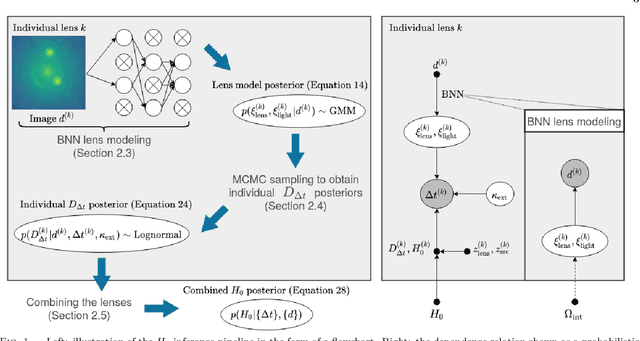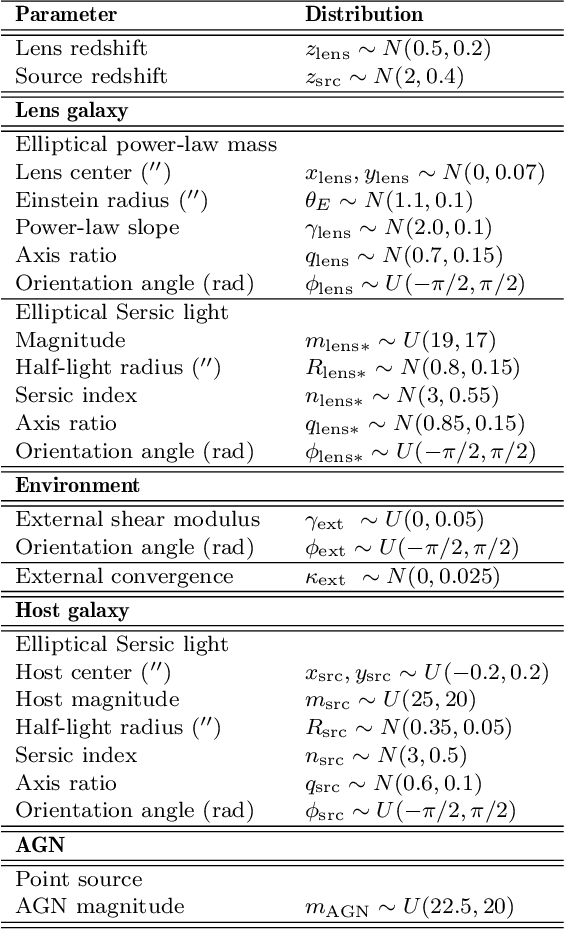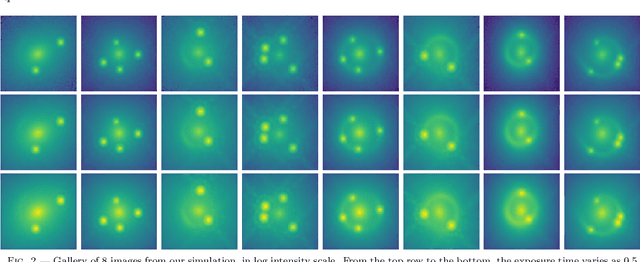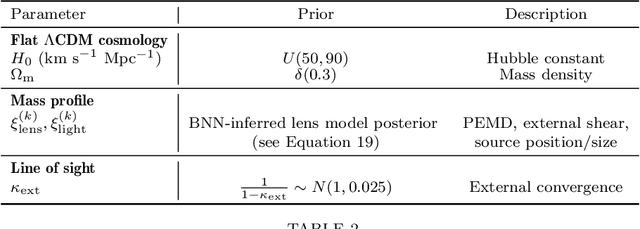Large-Scale Gravitational Lens Modeling with Bayesian Neural Networks for Accurate and Precise Inference of the Hubble Constant
Paper and Code
Nov 30, 2020



We investigate the use of approximate Bayesian neural networks (BNNs) in modeling hundreds of time-delay gravitational lenses for Hubble constant ($H_0$) determination. Our BNN was trained on synthetic HST-quality images of strongly lensed active galactic nuclei (AGN) with lens galaxy light included. The BNN can accurately characterize the posterior PDFs of model parameters governing the elliptical power-law mass profile in an external shear field. We then propagate the BNN-inferred posterior PDFs into ensemble $H_0$ inference, using simulated time delay measurements from a plausible dedicated monitoring campaign. Assuming well-measured time delays and a reasonable set of priors on the environment of the lens, we achieve a median precision of $9.3$\% per lens in the inferred $H_0$. A simple combination of 200 test-set lenses results in a precision of 0.5 $\textrm{km s}^{-1} \textrm{ Mpc}^{-1}$ ($0.7\%$), with no detectable bias in this $H_0$ recovery test. The computation time for the entire pipeline -- including the training set generation, BNN training, and $H_0$ inference -- translates to 9 minutes per lens on average for 200 lenses and converges to 6 minutes per lens as the sample size is increased. Being fully automated and efficient, our pipeline is a promising tool for exploring ensemble-level systematics in lens modeling for $H_0$ inference.
 Add to Chrome
Add to Chrome Add to Firefox
Add to Firefox Add to Edge
Add to Edge